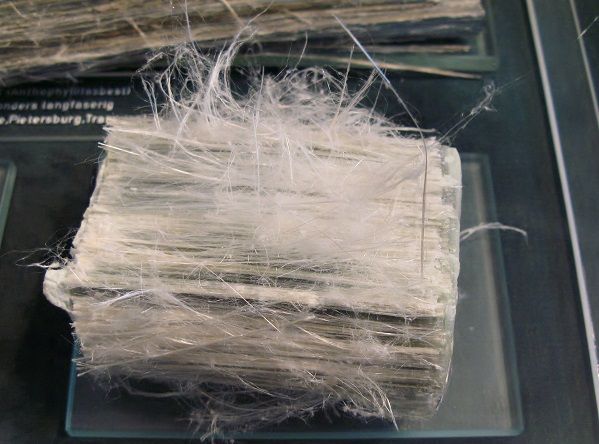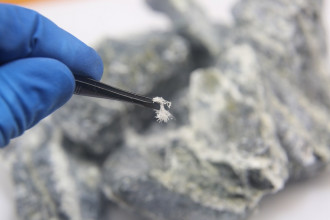Asbestos in materials
Asbestos in materials is the simplest sample to take in order to assess the potential occurrence of asbestos. The sample should be:
- representative
- not too large
Too large samples are difficult to handle. Small samples are also inappropriate since asbestos is often unevenly distributed in the material. If the sample is too small, the potential occurrence of asbestos could be overlooked. Moreover, the handling of small samples can be problematic since extra material may be needed to verify the analyses. Generally, 3-5 cm samples are appropriate.
Asbestos occurs in a diversity of materials. In buildings, asbestos can be found in carpets, pipe insulation, joint compounds, roofing and panelling material.
When sampling a carpet, one should be aware that asbestos may also be present in the adhesives underneath the carpet. The different parts of the carpet should be analyzed separately in order to ascertain the part in which the asbestos originates.
 Assessment of asbestos fibers in air
Assessment of asbestos fibers in air
The sampling is performed using a polycarbonate filter mounted in a cassette and connected to an air pump. Longer sampling times gives lower limits of detection. The number of particles on the filter must, however, not become too high (the filter becomes stained when the particle density becomes too high).
Only fibers with diameters <3 µm, length >5 µm and length:thickness ratio of at least 3:1 are counted.
Asbestos in soil
Asbestos can be present as contamination in soil where asbestos containing material has been exposed during a longer time period, or where asbestos has been released by friction and then mixed with the soil. ALS Europe offers qualitative and quantitative types of analyses for soil asbestos samples. For these types of analysis about 250 g of sample is needed.
Asbestos in dust

Settled dust can be sampled using common transparent office tape.
Take 10-15 cm of tape and fold 2 cm at each end, to hold the tape. Press the adhesive side against the dust. Press lightly with the finger, 2-3 times in the middle of the tape and 1-2 times on the sides, so that a thin, barely visible layer is collected. Then attach the tape sample to e.g. a transparency or a plastic pocket and mark it.
Asbestos in water
Asbestos most often enters the water from old asbestoscement water pipes. Sampled water is filtered through polycarbonate filter and he is analysed by SEM. This method is very sensitive to water purity. Only clean waters could be analyzed. For analysis 100 ml of water is enough.

